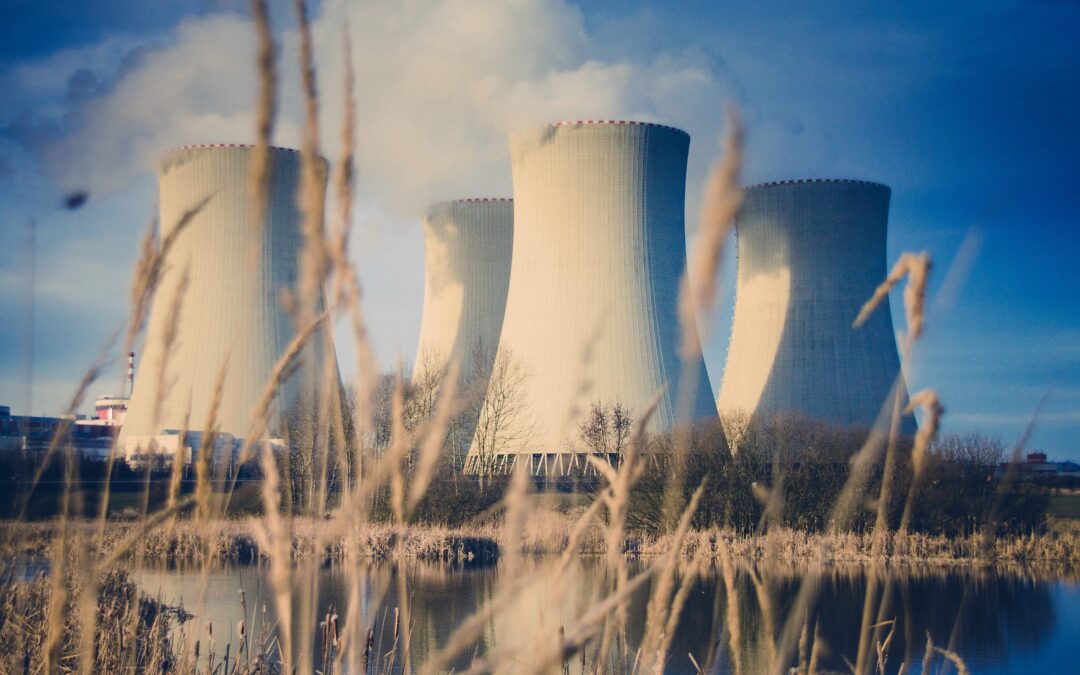By Wojciech Kość
Poland’s government is pushing ahead with ambitious nuclear plans as part of efforts to decarbonise the economy and reduce reliance on coal. But some environmental groups are critical of the idea, and even nuclear enthusiasts fear the plans may be difficult to implement.
In what may come as a surprise to some, Poland came close to launching nuclear-driven decarbonisation of its coal-reliant energy sector as early as 1989, in the dying months of communism.
The germ of Poland’s future energy policy emerged during the so-called “round table talks” in Warsaw, which laid the groundwork for the communist party’s transfer of power to the democratic opposition.
Apparently well equipped with the latest science on the impact of rising concentration of atmospheric CO2 – not even a year after the ground-breaking testimony on global warming by James Hansen in the US Senate – the communist authorities tried to draw the Solidarity trade union’s attention to the problem.
“The proposed variants of the development of the energy sector should account not just for the short-term reduction of SO2, NOx, and particulate matter emissions, but also limit emissions of CO2, which are putting the global biosphere in danger,” said a representative – sadly unnamed in the transcripts – of the soon-to-be-gone regime.
“A programme of building nuclear power and thermal power plants…requires a thorough analysis in this context,” the representative added.
Unfortunately for Poland’s current climate record, the Solidarity-led opposition shot down the idea at the time, echoing the national unease about nuclear power plants just two years after the Chernobyl disaster. The clout of the mining sector within the trade union also swayed their stand in favour of fossil fuels.
“The opposition…demands withdrawing from the construction of nuclear power plants,” said Radosław Gawlik, an expert on the Solidarity side. He called for the modernisation of conventional – meaning coal-fired – power generation instead.
Three decades later, Gawlik – now a green activist – has changed his tune to become a fierce proponent of a so-called “100% renewables” option today. But this again puts people like him at loggerheads with a new generation of nuclear power enthusiasts in Poland.
A new push for nuclear
Proponents of nuclear energy have been encouraged by the government’s ambitious plans for atomic energy. The first reactor is planned to go online as soon as 2033, with five more to follow by 2043, according to the government’s official nuclear strategy (PPEJ).
The climate ministry last year outlined that the aim is to have a total installed nuclear capacity of around 6 to 9 GW, “based on proven, large-scale, Generation III (+) pressurised water reactors”.
The total cost will run to an estimated 80 billion zloty (€17 billion) over the programme’s lifespan, the government’s plenipotentiary for strategic energy infrastructure Piotr Naimski said last week.
Yet some experts, including those who favour the development of nuclear power, fear that the proposed timeline is overly optimistic.
“It is still possible to build a nuclear power plant by 2033,” says Jakub Wiech, editor-in-chief of Energetyka24.pl, an energy news service, who is also a nuclear power enthusiast. “But, in practice, one can see a number of circumstances that significantly reduce the feasibility of a nuclear power plant in such a short time.”
“There are still no official decisions on the technology partner or financing model. The buyout of PGE EJ1 [a subsidiary of Poland’s largest power company, state-owned PGE], which the government wants to be responsible for the implementation of the programme, is also delayed,” he adds.
An official in the climate and environment ministry assures Notes from Poland – on condition of anonymity – that everything is going to plan. He says that the takeover of PGE EJ1 and reports on “the two most promising locations” are both due this year, and the final location decision will follow shortly after.
The PPEJ currently names four locations as the “most favourable”. The two favourites are coastal sites, Lubiatowo-Kopalino and Żarnowiec, which the company says have “significant electricity demand and the lack of large, dispatchable generation sources in the area; access to cooling water; and the possibility of transporting large-size loads by sea”.
The other two candidates are the current locations of big lignite-fired power plants: Pątnów and Bełchatów, the latter being the home of EU’s single biggest CO2-emitting installations. These in turn offer “developed transmission, transport and other infrastructure” as well as a central location and a chance to offer alternative jobs in areas where old power plants will close.
Seeking international partners
Once a site is chosen, Poland will need to import technology and know-how. Here the United States appears to be leading in the race, and as the ministry official puts it, sports a “decades-long partnership that is about risk sharing”.
In October, Poland and the US signed an agreement outlining cooperation on Warsaw’s nuclear power programme over the next 18 months.
“The US and Poland will work together on a report delivering a design for implementing Poland’s nuclear power program, as well as potential financing arrangements,” says the agreement.
Speaking this week with Sieci, a newspaper close to the ruling party, the head of Poland’s central bank (NBP), Adam Glapiński, said that an agreement is already in place for “the Polish side, with the help of the NBP, to provide 51% of the necessary funds, and the Americans 49%”.
Naimski met on Monday with Patrick Fragman, CEO of Westinghouse Electric Corporation, to discuss the firm’s proposed involvement in Poland’s nuclear plans as part of the Polish-US cooperation.
.@WECNuclear has announced intentions to invest in nuclear technologies in Poland, following a meeting in Warsaw. The meeting came as a result of U.S.-Poland deal on technology and investment scheme with participation of U.S. entities https://t.co/f5nAWTOr99
— Wojciech Jakóbik (@wjakobik_en) March 15, 2021
Yet other nuclear power economies are also in the running to work with Warsaw. Naimski said in December that Poland would talk with any country able to offer conditions compatible with its nuclear strategy.
Paris is one potential partner. In February, Jean-Bernard Lévy, CEO of the French energy giant EDF, visited Poland, reportedly to discuss France’s involvement in Poland’s nuclear power programme.
“French companies are among those with which there are serious discussions at the moment,” the development minister, Jarosław Gowin, told the Polish Press Agency (PAP) on 8 March.
Francja nie składa broni. Chce budować polską elektrownię atomową https://t.co/iB2n6gnomZ
— Węglarczyk 🇵🇱🇪🇺🇺🇸 (@bweglarczyk) February 11, 2021
Another option would be South Korea. “[We can] guarantee a high level of security and the ability to complete the project on time and within budget,” Sang Don Kim, Korea Hydro & Nuclear Power’s (KHNP’s) vice-president for business development, told business news site Biznes Alert in late February.
The long-term view
The overarching goal of the plan to add a nuclear power plant to Poland’s currently coal-dominated energy mix is to bring down the climate-warming emissions of CO2. Nuclear power is exceptionally fit for purpose, according to Szymon Malinowski, a professor of atmospheric physics at Warsaw University.
“We need energy that does not add CO2 to the atmosphere and that is solar energy, wind energy, and nuclear energy in the first place. The least emissions-intensive of those are wind and nuclear, but if we want energy that’s independent of external conditions and controllable, then we’re left with nuclear,” Malinowski explains.
The so-called capacity factor (Cf) for nuclear power plants is typically over 80%, meaning they produce power at least 80% of the time. That trumps offshore wind’s Cf of around 50%, let alone solar panels, which rarely exceed 20%.
Malinowski says that while renewables like solar or wind have a place in the mix, making entire grids reliant exclusively on them would require the construction of mass energy storage infrastructure and a redesign of the grid. Such solutions are a long way away, while the climate doom clock keeps ticking, he says.
The time argument is a double-edged sword. It is what opponents of nuclear power use as well, claiming that the investment and time needed to build nuclear power plants could be better used for deploying renewables.
“The ambitious Polish nuclear power plan foresees just a 20-25% role of nuclear by 2043-2048 – and even 30% natural gas – while the first emission cuts would at best appear in 2033,” says Przemysław Stępień, an activist for Poland’s Green Party and advocate of the so-called “100% renewable” model.
“That means immense additional carbon emissions due to inaction.” Stępień instead proposes renewable energy as a more feasible alternative, given its buildout rate of 2 GW per year for onshore wind energy and 4 GW for solar energy.
Meanwhile, Adam Błażowski, an activist for the environmental foundation FOTA4Climate, argues that renewable energy sources, for now, need to be supported by a significant buildout of natural gas power plants during “no wind – no sun” periods. “Excluding nuclear power means we risk an emissions-heavy natural gas lock-in for decades,” he says.
But according to Stępień, that would not necessarily be the case with the right speed of offshore wind expansion and grid modernisation. He argues that an additional 10 GW of offshore farms would allow Poland to reach 80%-90% of electricity production from renewables by 2030-2035.
Błażowski disagrees, noting that Stępień – like other proponents of the all-renewables model – greatly underestimates the necessary scale of the renewable development. “Poland would actually need 50 GW offshore, 50 GW onshore, 40 GW solar and 30 GW gas backup to achieve that,” he says, referring to renewables’ lower Cf characteristics.
Moreover, wind turbines and solar panels occupy a much larger area than a nuclear plant to produce an equivalent amount of electricity. Such large-scale construction can cause damage to the environment. As such, plans for a solar power plant next to the Białowieża Forest, Poland’s top biodiversity hotspot, recently irked many environmentalists.
“The goal isn’t a 100% renewables electricity, but a 100% low carbon economy. Should energy for heating and transport be covered by renewables alone, it will spell an extremely high cost for Polish nature and landscape,” says Błażowski.
Solving Poland’s commitment issues
Wiech agrees, to a certain extent: “Since 1989, no government has been able to make a consistent and comprehensive attempt to change the profile of the country’s energy mix towards reducing emissions. Now we can make up for these losses by investing in solar farms or offshore wind farms.”
Poland indeed has plans for massive investment in offshore wind power in the Baltic Sea, looking to build up to 11 GW of capacity by the early 2030s, according to the country’s energy strategy.
Warsaw also assumes that photovoltaics (PV) – which are fast to build and require little capital upfront – will also play a role in squeezing coal to no more than 28% of the mix in 2040, from the current ratio of more than 70%. The government has plans for 5-7 GW of installed PV capacity by 2030 and 10-16 GW by 2040.
“Paradoxically, there’s one benefit in Poland having neglected energy transformation: we can now take advantage of developed renewable technologies, which are much cheaper and more efficient than, let’s say, 20 years ago,” says Wiech.
But, he adds, nuclear power needs to be the bulwark of Poland’s departure from coal. However, he also sees big risks in Poland’s institutional weakness and the increasing political polarisation of recent years.
“Even if decisions are made on the nuclear power plant during the current parliamentary term, it is not certain that the nuclear programme will be continued if the government changes. If we throw that away, the whole plan will crumble,” adds Wiech.
Main image credit: centralniak/Flickr (under CC BY 2.0)




















